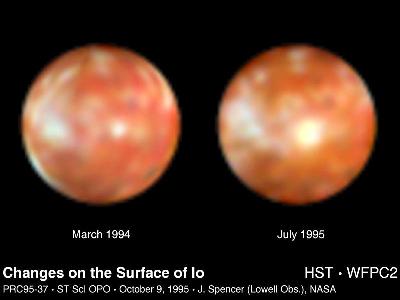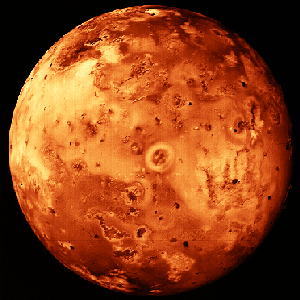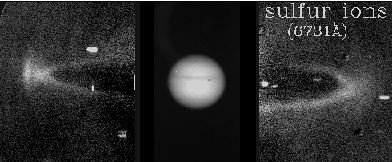
Io and the other 3 moons of Jupiter are easily visible as star-like points of light in a small telescope or even binoculars, most of the time that Jupiter is visible. From Earth, our point of view lies close to the plane of their so that they seem to move back and forth about Jupiter in a nearly straight line. The 4 moons are hard to tell apart in a telescope, so a diagram showing their positions for the time of observation helps.
Professional astronomers use large telescopes, but even these
instruments are insufficient to show much detail.

From outside Earth's atmosphere, one can do a lot better. Still, Io is not very big and very far away.

The best way to see Io is from nearby.

[UVSTAR image]
The brightest emissions from the Io plasma torus are deep in the ultraviolet, at that are blocked by Earth's atmosphere. Outside the Earth's atmosphere, these emissions can be seen, even with the small ultraviolet telescopes that have been orbited.
[Ulysses]
[Galileo]
Getting close is best, but no telescopes capable of imaging the Io plasma torus have been sent to Jupiter. However, the torus has been scanned by spectrographs and sampled by plasma instruments flown right through it.